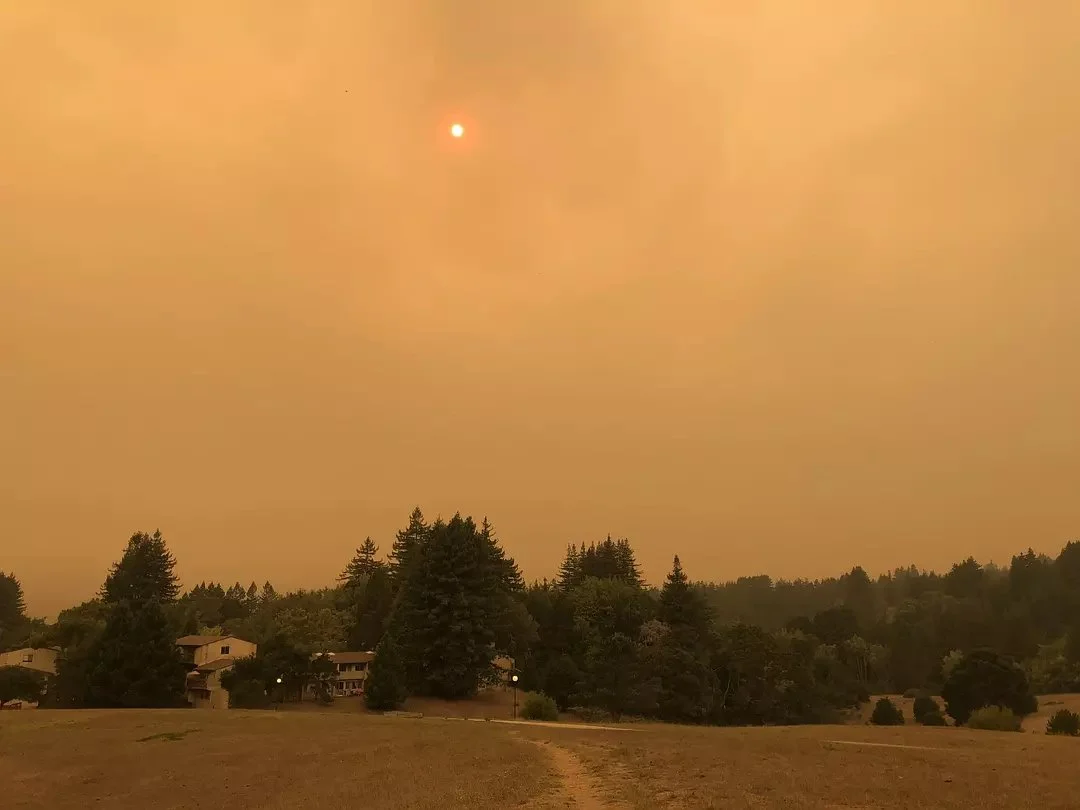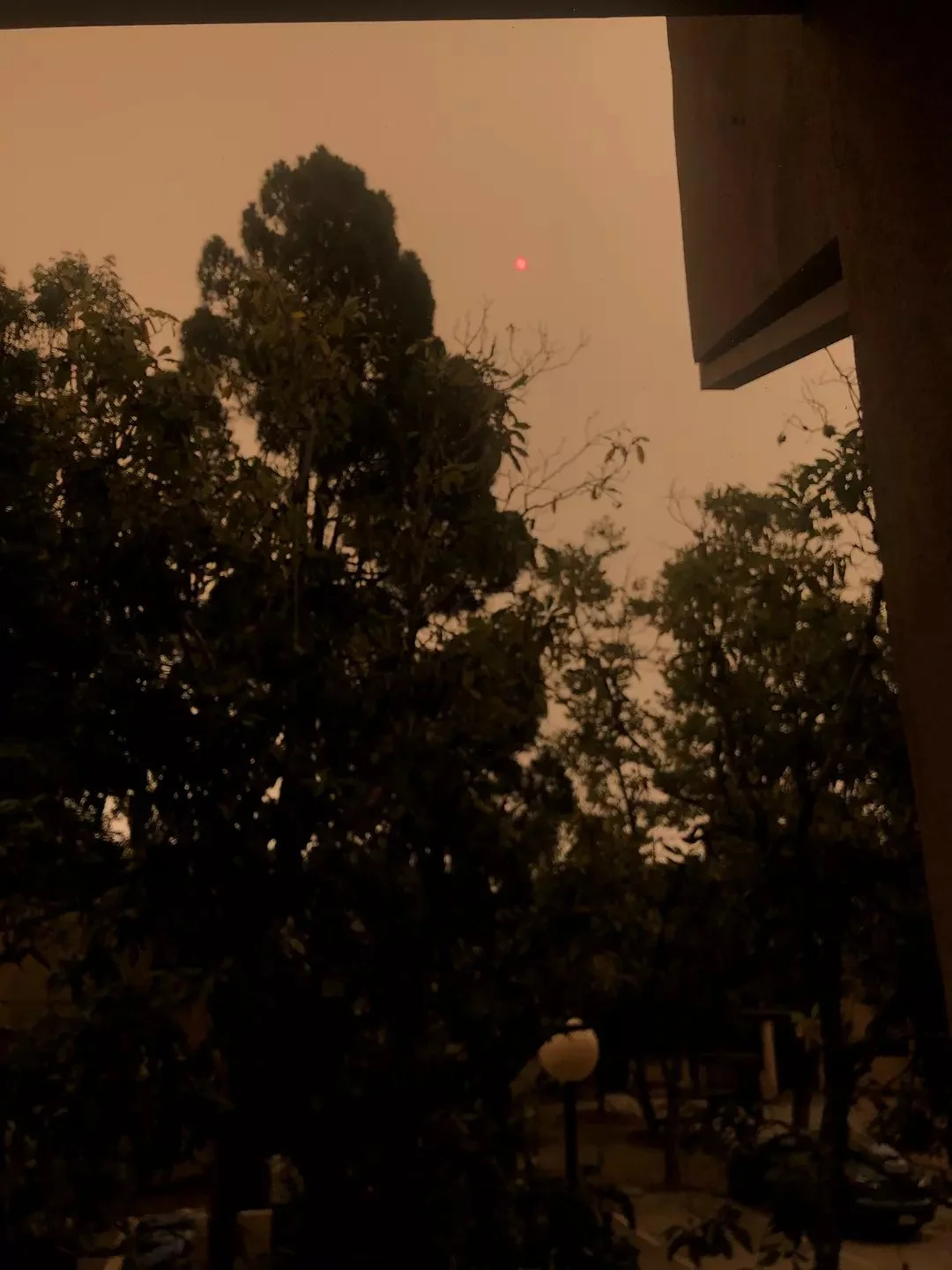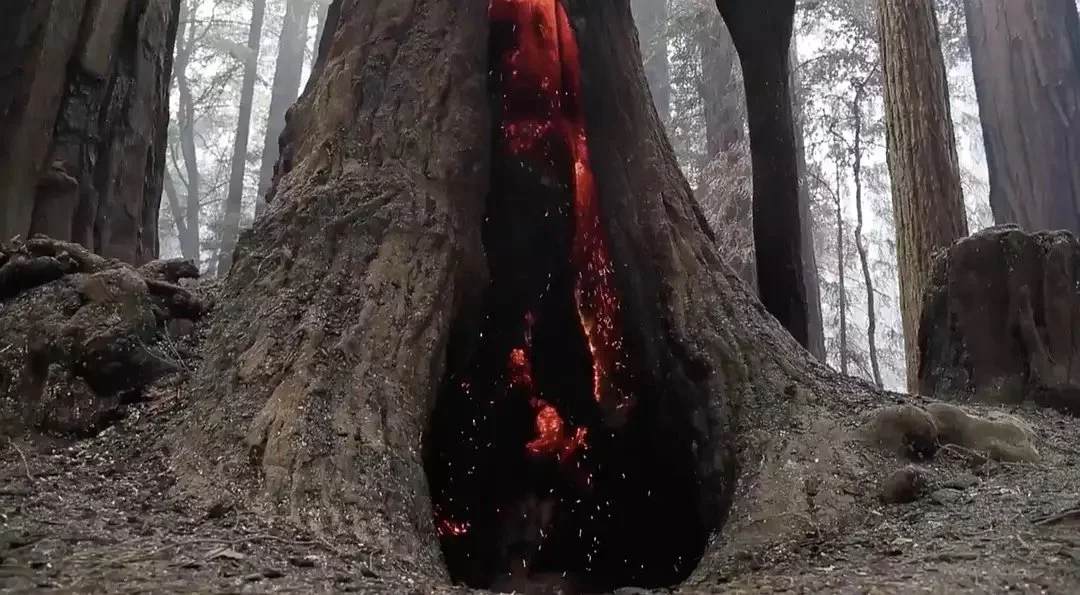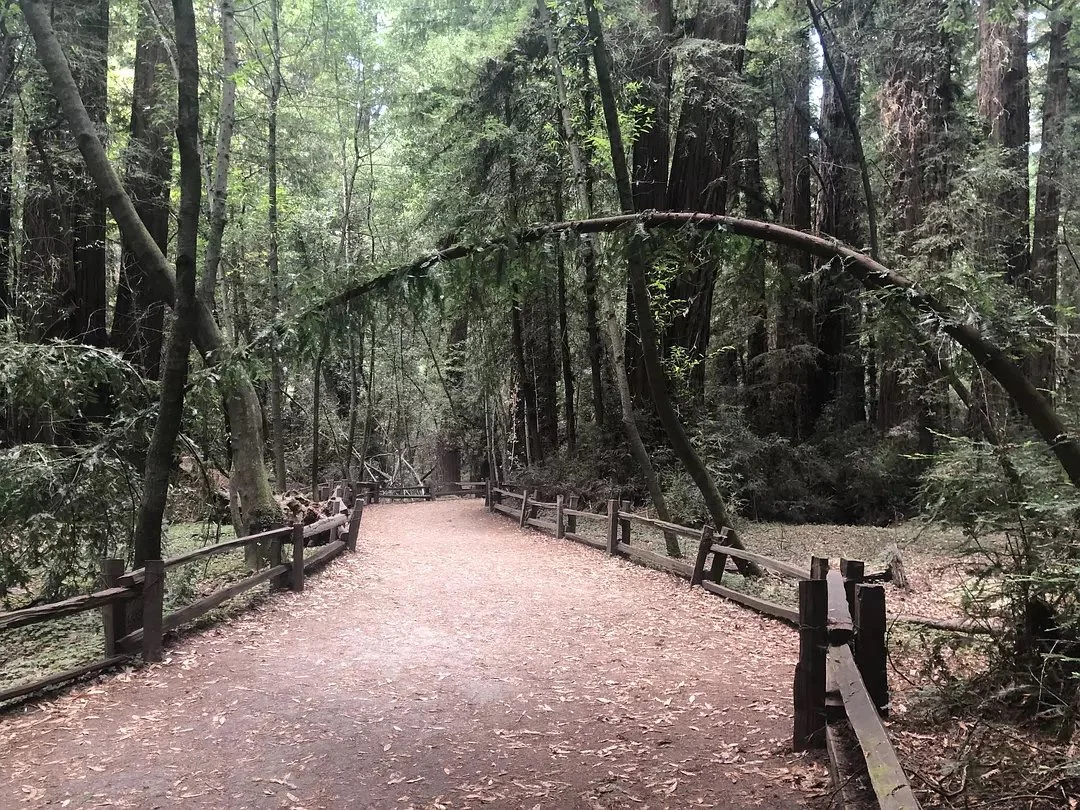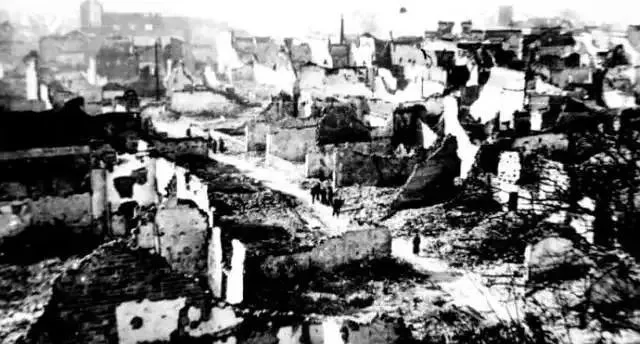2016年的夏天,我在上海的一个艺术家工作室实习。其中一个工作就是每天烧报纸,然后用剩下的灰烬来作为绘画的材料。灰烬的颜色会不一样,有浅灰色的,深灰色的,完全黑的,根据烧的程度呈现出不同的灰度。我不能完全让报纸烧掉,因为老板需要保持一点报纸的痕迹和若隐若现的报纸文字。坐在一个小铁盆旁,我可以比较容易地控制住盆中的火,来收集我想要的灰烬颜料。在七月份,坐在火炉旁边还是挺难受的,于是我时常会坐在离火盆一两米的地方,看看书,计算时间差不多了就把火灭掉。那时对新材料主义十分感兴趣,所以会找一些当时听上去还挺时髦的文章来读。其中,对flat ontology 尤为感兴趣。新材料主义哲学家对康德关于人的认知提出了挑战,他们反对康德的transcendental idealism, 认为外部事物的认知(intuition)不是依据于人的主观判断与感受,而是处在一种物与物的关系之中。物体的主体性不依赖于人的意识,而本体(thing-in-itself)也不是先验的(a prior)。椅子为何是椅子,因为椅子处在和桌子,人的身体,和其他物体的关系中成为了椅子。椅子本身不是椅子,在与其他物体作用下成为椅子。物体的本体变成了平面的,因为一切的物质都是在关系之中;这种无差别性,消除了人与物,有机与无机之间的差别。那时,每天看着那团火,想着何为火,火怎么成为火,我和火之间的关系是怎样的,让火成为了火。在太阳高照的日子,凝视火好像成为了一种哲学的凝视。如柏拉图洞穴中的那一团火,看着折射的影子,试图找到真正的本体。
火似乎并不是一个物体,因为我总是需要打火这个过程来让火形成。形成中,又有着无数的不确定性,比方说温度,湿度,报纸与火苗的位置,空气的流通等等。这些不确定性让火每次都形成了不同的火。所以,火可能更多是一种运动,一种状态,一种过程。火不是一个独立的物体,就如同flat ontology中的物体的主体,火成为了火是在和其他物体的交互间形成,变化,消失。火总是蕴含着开始的意味,比方说火种,或者是普罗米修斯偷来火种,开始人类的文明。火到底是一个变化的状态,还是一个开始的源头?当时,在工作间隙,会查查关于火的故事,无论是东方的祝融,还是西方的普罗米修斯,上帝和神带来了人类文明希望的火。火,看似好像是五行中的一个元素,是自然的一部分,但当人加入到这个天平之中时,火不仅仅是自然的火,更是技术的火,社会的火,文化的火。Bernard Stiegler在关于technics的论述中说到,火是technics的起源,从此之后,技术得以诞生。盯着那团火,看到的是由可燃性物体与氧化剂在高温下形成的链反应,但是摇曳的的火光后,似乎有着比这自然更多的意味。
又是新的一天,我开始了烧报纸的工作。不知道为什么,突然脑子中闪过了文夕大火的想法。文夕大火这个词一点也不陌生,但又很陌生。虽然出身于长沙,又在这个城市生活了这么多年,对于这个曾今发生的历史事件,只是有所耳闻。于是,顺着这团火,开始了一个好几年的项目。我自己笑称是一场寻火之旅。这不是一场自然的火,焦土政策的战略方针让这场人为的大火在一座有着千年历史的城市烧了数天。对于我这个几十年后的长沙人,这场大火可能是历史的火,消失中记忆的火。不知道是不是巧合,在古希腊神话中,普罗米修的哥哥埃庇米修斯忘记所有,从而导致了忘记给予人类良好的本能,而普罗米修斯是绝对知识的象征,不曾忘记,所以偷来火种给予人类。火是对于埃庇米修斯遗忘的弥补。火似乎本身就和记忆有着千丝万缕的关系。文夕大火在被遗忘,我尝试重新拾起,将其外化,成为一种新的记忆。
University California Santa Cruz During the Forest Fire
在我拍摄曹家的纪录片时,我把我的外公重新带回到他父亲拥有的公馆,他描述着公馆过去的样子。公馆早已在大火中被烧毁,而现在是一个变电站。在喧嚣的马路旁,外公讲着当时公馆的位置,面积,和一些故事。我不知道有多少是可信的,毕竟当时我外公才两岁,也许更多是来自于他姐姐的描述。看着完整的钢筋水泥,如果不是听到外公的讲述,不会想到这里曾今是他儿时居住过的地方。可能我并不在乎这些记忆到底有多可信,只是想记录下外公的描述,形成一个新的关于文夕大火的记忆。这个是曹家的记忆,是这座城市的记忆。这场寻火之旅注定不是一场验证,不是一次考古,可能本身就是一场重塑。在散落在城市中,拾起一个碎片,拼起一个角落。我不会想到那一天,在没有有效的通讯方式时,面对即将来到的日本侵略者和焦土政策时,人们是经历了怎样的恐慌与无助。
在University California Santa Cruz的公寓窗前. In front of the window of my apartment at University California Santa Cruz
2016年开始这场寻火之旅,当我在打下这些文字的时候,是2020年八月,这场寻火之旅已经开始了四年。从文夕大火的项目,到现在在进行的关于火疗的项目,我一直在尝试找寻这个社会的火。讽刺的是,在我找寻火这个“物”的时候,火在这几天找上了我。几天前,因为雷电,北加州多处开始了森林大火。没有办法控制的火烧,顺着风一直蔓延到我现在的学校。两天前,空气中开始飘散白色的灰烬,用手去触碰,就变成了灰。路边可以看到已经烧焦的树叶。赤黄的天空中挂着鲜红的太阳,世界好像已经被诅咒。昨天,进一步恶化的森林大火使得住在学校的我必须撤离。在匆忙与恐惧中,我打包着行李,丢着不重要的东西。当然不是所有东西都能带走,我的许多工具还有打印作品都放在了工作室。坐在房间的窗前,呼吸着烧焦的空气,看着诡谲的天空,等待着教授来开车接我离开公寓。我似乎好像和1938年11月13日的长沙人有着某种莫名地连接。当然,我是幸运的,我处在一个信息如此发达的社会,我可以根据实时地图看到大火的局势;学校政府也会一直更新大火的进展,驱散人员;我也不用担心没有够快的交通工具离开这里。我是恐惧的,但我显然不会如文夕大火中的人们那般慌张。这两场大火显然也完全不一样,一场是放火,一场是灭火。不管火的形成,在大伙面前,我们似乎都是那么的无助。火本身也许并不完全是恶意的,焦土政策本是一种延长战线的战术策略,从而更好地反击;而森林大火是自然法则,为树林的重生提供原料。而人,在面对他们时,都只能是逃亡。
在Big Basin Redwood燃烧的redwood来源于推特 The image of burnning redwood at Big Basin Redwood from Twitter
Big Basin Redwood, 摄于2019年9月 Shoot in September, 2019 at Big Basin Redwood
此时,回忆着记忆中的文夕大火,感觉人似乎才是森林大火与文夕大火形成的尺度。看着门前的灰烬,透过历史照片看着烧焦的长沙城,那无法连接起的时间与地理的鸿沟,在我的意识中慢慢汇合。在我可能是一生的寻火之旅上,这场意外的森林大火,似乎是第一次让我感受到了火。之前,我只是隔岸观火。当我在紧张地联系好友,为了更差的情况做准备的时候,我似乎可以体会到外公说的,他们当时在逃亡的时候每个孩子的衣服中都封着金条的体验。这一场寻火之旅开始于凝视着的火盆,现在,我被一个更大的火的力量驱赶。火不仅仅是一场记忆的旅行,是一次切身的感受(affect)。这个感受是来得那么真实,我可以闻到,看到,情绪上共鸣到。如果说,火是一种物,那么,在这一次次的事件作用于我身上时,物成为了动词,一种置于情境中的形成。每一次,都是不同的体验,就如同那每一次都是不一样的物理的火。
在刷twitter 的时候,看到一年前曾去过的Big Basin Woodpark被大火灼烧。看视频,大部分树木依旧存活着,大火过去又会新芽萌发吧。大火后,时间会让这座森林慢慢重新焕发新机,但人们的房子和房子里的物品会随之消失。Redwood留下了被灼烧后的伤疤,当那些房子于物品被大火烧毁后,记忆也只能留存在我们的脑中,那沉重的痛只能感受到,停留在当事人的心中。伤疤总是会好的,但也总是好不了的。记得我当时去采访一些长沙人关于吻戏大火的看法,他们有些不愿多说,可能是个耻辱,可能是个伤疤。让残留下的痕迹继续续说故事,而这可能就是这场火的故事。
屋外传来直升机的轰鸣声,可能是正赶往救火现场。我把自己锁在房间里,不停地刷着邮件,twitter, discord,和实时地图。想着自己什么时候可能会被迫继续撤离,放在学校的自己的作品会不会被烧毁。可能明天,我又会要整理行李,联系同学,在这疫情蔓延的时候,赶往下一个shelter。
长沙文夕大火后 After the Wenxi Fire in 1938 in Changsha, China
English Translation:
Summer of 2016, I was interning at an artist’s studio in Shanghai. One of my tasks was to burn newspapers every day and then use the leftover ashes as painting materials. The color of the ashes varied :some were light gray, some dark gray, some completely black, depending on the degree of burning, showing different shades of gray. I couldn’t let the newspapers burn completely because the boss wanted to preserve some traces of the newspapers and the faint, barely visible text. Sitting beside a small iron basin, I could relatively easily control the fire inside the basin to collect the ashes I wanted as pigments. In July, sitting next to the fire was quite uncomfortable, so I often sat about one or two meters away from the basin, read a book, and extinguished the fire when the time was right.
At that time, I was very interested in new materialism. I read some articles that sounded quite trendy. Among them, I was especially intrigued by flat ontology. New materialist philosophers challenged Kant’s theory of human cognition. They opposed Kant’s transcendental idealism, arguing that the cognition of external things does not depend on human subjective judgment and perception but rather exists in the relationships between things. The subjectivity of objects does not rely on human consciousness, and the thing-in-itself is not a priori. Why is a chair a chair? Because the chair becomes a chair in relation to the table, the human body, and other objects. The chair itself is not inherently a chair; it becomes a chair through interactions with other objects. The ontology of objects becomes flat because all matter exists within relationships; this indifference eliminates distinctions between humans and objects, organic and inorganic.
Every day, looking at the fire, I thought about what fire is, how fire becomes fire, and what the relationship between me and the fire is. What makes fire fire? On sunny days, staring at the fire seemed like a kind of philosophical gaze. Like the fire in Plato’s cave, watching the shadows cast by the flames, trying to find the true essence.
Fire doesn’t seem to be an inert object because I always need the act of striking a fire to make it appear. In the process of forming, there are countless uncertainties, such as temperature, humidity, the position of the newspaper relative to the flame, airflow, and so on. These uncertainties cause each fire to be different. Therefore, fire may be more of a movement, a state, a process. Fire is not an independent object; just like the subjectivity of objects in flat ontology, fire becomes fire through interactions with other objects, constantly forming, changing, and disappearing. Fire always carries the meaning of a beginning — like a spark, or Prometheus stealing fire and starting human civilization. Is fire a changing state or the source of a beginning? At that time, during breaks, I looked up stories about fire — whether the Eastern Zhurong or the Western Prometheus, gods and deities bringing the hopeful fire of human civilization. Fire seems to be an element in the five elements, part of nature, but when humans enter the equation, fire is not just natural fire — it’s technological fire, social fire, cultural fire. Bernard Stiegler, in his discussion on technics, said fire is the origin of technics, from which technology was born. Staring at the fire, I saw the chain reaction formed by combustible materials and oxidizers at high temperatures, but beyond the flickering flames, there seemed to be something more meaningful than just nature.
Another day, I began burning newspapers again. For some reason, the thought of the Wenchang Fire flashed through my mind. The phrase was familiar but also strange. Although I am from Changsha and have lived there many years, I only heard about this historic event vaguely. So, following this fire, I started a project that lasted several years. I jokingly call it a journey to seek fire. This was not a natural fire. The scorched earth policy caused this man-made fire to burn for days in a city with a thousand years of history. For me, a Changsha resident decades later, this fire is a historical fire, a fire of disappearing memory. Maybe it’s a coincidence that in Greek mythology, Prometheus’s brother Epimetheus forgot everything, resulting in the failure to give humans good instincts, while Prometheus, a symbol of absolute knowledge, never forgot and stole fire for humans. Fire seems to be a compensation for Epimetheus’s forgetting. Fire itself is intricately connected with memory. The Wenchang Fire is being forgotten; I try to pick it up again, externalize it, and turn it into a new memory.
When I was filming the documentary about the Cao family, I brought my grandfather back to his father’s mansion. He described how the mansion looked in the past. The mansion was long destroyed in the fire and is now a transformer station. Next to a noisy road, my grandfather recounted the location, size, and stories of the mansion. I don’t know how much of it is accurate, after all, my grandfather was only two years old then; maybe most came from his sister’s descriptions. Looking at the intact reinforced concrete structure, without my grandfather’s words, I wouldn’t have guessed this was his childhood home. Maybe I don’t care much about the accuracy of these memories; I just want to record my grandfather’s description and form a new memory about the Wenchang Fire. This is the Cao family’s memory, the city’s memory. This journey to seek fire is destined not to verify or be archaeology but to reshape. Picking up scattered fragments in the city, piecing together a corner. I never imagined that on that day, without effective communication, facing the imminent Japanese invasion and scorched earth policy, what panic and helplessness people experienced.
Sitting by the apartment window watching the sky — the journey to seek fire began in 2016, and as I write this in August 2020, it has lasted four years. From the Wenchang Fire project to the ongoing fire therapy project, I’ve been trying to find the fire of society. Ironically, while I was searching for fire as an “object,” fire came looking for me these days. A few days ago, due to lightning, multiple forest fires broke out in Northern California. The uncontrollable fire spread with the wind all the way to my current school. Two days ago, white ashes began drifting through the air, turning to dust when touched. Burnt leaves lined the roads. The reddish-yellow sky held a blood-red sun, as if the world were cursed. Yesterday, worsening forest fires forced me to evacuate from campus. In panic and fear, I packed my bags, threw away unimportant things. Of course, I couldn’t take everything; many of my tools and printed works remained in the studio. Sitting by my window, breathing the smoky air, watching the eerie sky, waiting for my professor to drive me away from the apartment. I feel a strange connection to the people of Changsha on November 13, 1938. Of course, I’m lucky — I live in a highly connected society where I can see the fire situation on live maps; the school and government constantly update fire progress and evacuations; I don’t have to worry about transportation. I am scared but obviously not as panicked as the people during the Wenchang Fire. These two fires are completely different — one arson, one a natural disaster. Regardless of how fire forms, in front of it, we all seem helpless. Fire itself may not be entirely malicious. The scorched earth policy was a tactical strategy to lengthen battle lines for counterattacks, while forest fires follow natural laws, providing fuel for forest regeneration. Humans can only flee when facing them.
On the school hillside, recalling the Wenchang Fire from memory, it seems humans are the scale that connects forest fires and the Wenchang Fire. Looking at ashes outside my door, through historical photos at the burnt city of Changsha, the chasm of time and geography slowly converges in my mind. In what may be a lifelong journey to seek fire, this unexpected forest fire is the first time I’ve truly felt fire. Before, I just watched from afar. When I was nervously contacting friends and preparing for worse scenarios, I felt a little of what my grandfather described — that during their flight, every child had gold bars sewn into their clothes. This journey began with staring at a fire basin; now I am driven by the force of a much greater fire. Fire is not only a journey of memory but also a visceral affect. This feeling is so real I can smell it, see it, emotionally resonate with it. If fire is an object, then in these events affecting me, the object becomes a verb — a forming situated in context. Each time is a different experience, just like each fire is a different physical fire.
While browsing Twitter, I saw that Big Basin Woodpark, which I visited a year ago, was burned by fire. Watching videos, most trees are still alive; after the fire, new shoots will grow again. Over time, the forest will slowly rejuvenate, but people’s houses and belongings will be lost. The redwoods bear scars from the burn; when those houses and belongings are destroyed by fire, memories remain only in our minds. The heavy pain stays in those who experienced it. Scars will heal, but never completely. I remember interviewing some Changsha residents about the Wenxi Fire; some were reluctant to talk, maybe it’s shameful or a scar. Let the remaining marks continue telling stories — maybe that’s the story of this fire.
Outside, the helicopter roars, probably heading to a fire rescue. I lock myself in my room, constantly refreshing emails, Twitter, Discord, and live maps, wondering when I might have to evacuate again, whether my work left at school will be burned. Maybe tomorrow, I’ll pack again, contact my collegues, and during this pandemic, rush to the next shelter.
